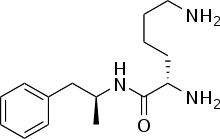Codrug
A codrug or "mutual prodrug" consists of two synergistic drugs chemically linked together to a single molecule, in order to improve the drug delivery properties of one or both drugs.[2][3]

An effective codrug should be pharmacologically inactive in its own right, but should release the constituent drugs upon biochemical breakage of the chemical linkage at the target tissue where their therapeutic effects are needed. As such, the chemical linkage (usually a covalent bond) should be subjectable to biodegradation, such as hydrolysis, by an enzymatic or non-enzymatic mechanism. The differential distribution of enzymes capable of catalyzing the breakage of the chemical linkage in different tissues may be exploited to achieve tissue-specific metabolism of the codrug to release the constituent drugs.
The constituent drugs are indicated for the same disease, but may exert different therapeutic effects via disparate mechanisms of action.
Examples
Some examples of codrugs:
- Benorylate, which is an esterified product of paracetamol and acetylsalicylic acid
- Fenethylline, which is a combination of amphetamine and theophylline
- Lisdexamfetamine, which is a combination of the amino acid L-lysine, attached to dextroamphetamine.
- Sulfasalazine, which is a combination of sulfapyridine and 5-aminosalicylic acid coupled with an azo linkage. It is on the World Health Organization's List of Essential Medicines.
- Sultamicillin, which is esterified ampicillin/sulbactam.
References
- Blick SK, Keating GM (2007). "Lisdexamfetamine". Paediatric Drugs. 9 (2): 129–135, discussion 136–138. doi:10.2165/00148581-200709020-00007. PMID 17407369.
- W. M. Lau (2008). "Scope and Limitations of the Co-Drug Approach to Topical Drug Delivery". Current Pharmaceutical Design. 14 (8): 794–802. doi:10.2174/138161208784007653. PMID 18393881.
- N. Das (2010). "Codrug: An efficient approach for drug optimization" (PDF). European Journal of Pharmaceutical Sciences. 41 (5): 571–588. doi:10.1016/j.ejps.2010.09.014.